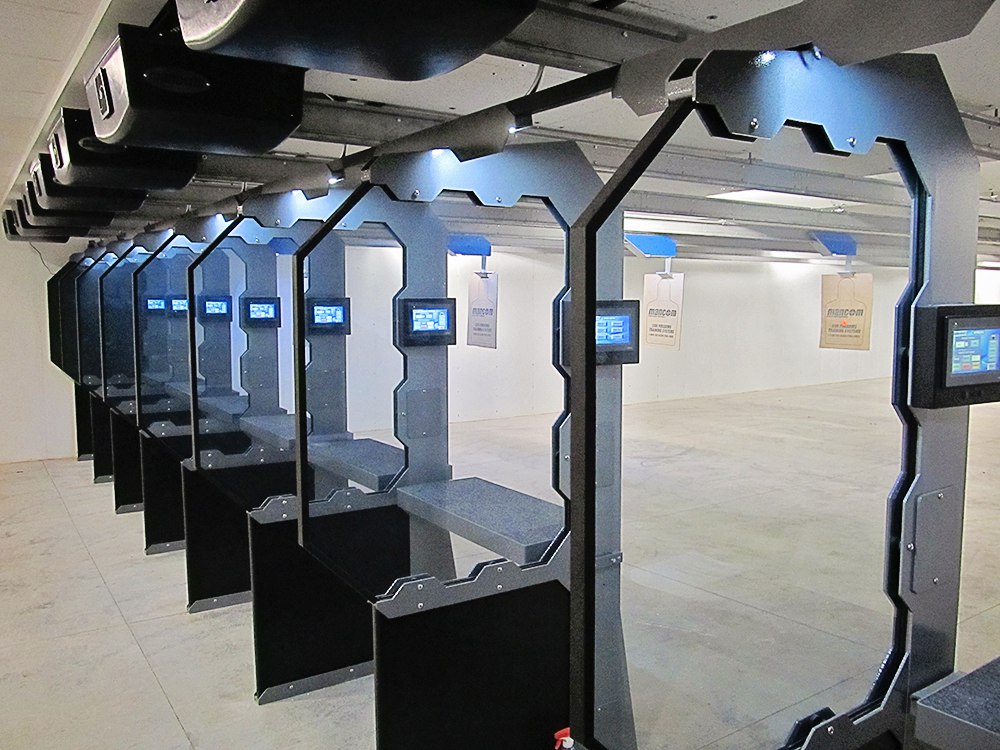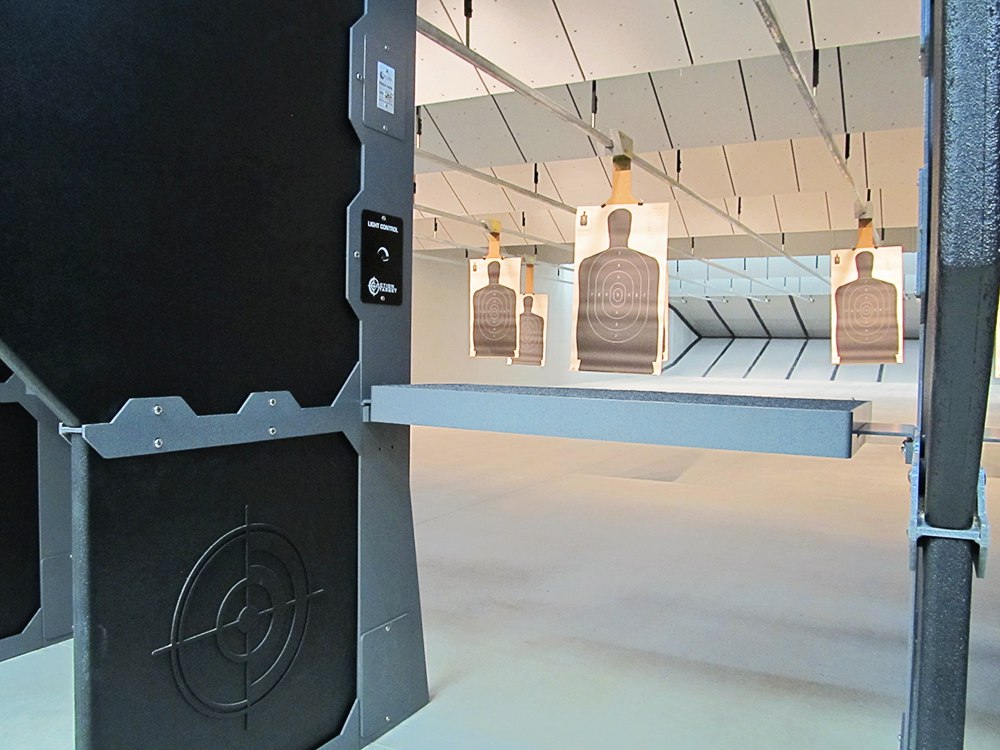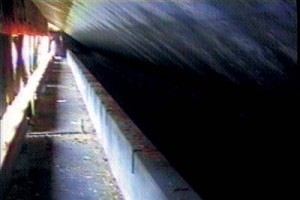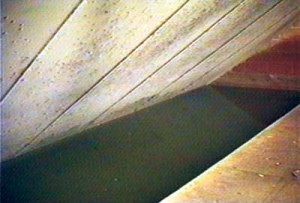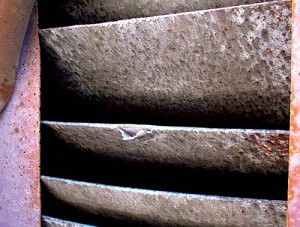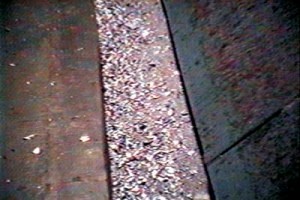Category: Indoor Range Products
The 411 on Shooting Range Ventilation
Ventilation is one of the most important aspects of an indoor shooting range. However, many misconceptions and contradictory information exist on the topic. As a range owner, it can be difficult to know what information is accurate and what the most important aspects of range ventilation are. Here are a couple common misconceptions debunked:
Misconception #1: The type of rounds shot will change the ventilation design.
Truth: It does not matter what type of rounds are shot, what type of ammunition is used, or how much shooting occurs in a small arms range. There is a standard ventilation design that works great for all ranges regardless of what ammunition is shot.
Misconception #2: Air flow speed in a range can be anywhere between 50 feet per minute and 75 feet per minute at the firing line.
Truth: The range should be designed for 75 feet per minute at the firing line or lines. This should result in an air flow that is not below 50 feet per minute at any individual point.
Misconception #3: Air flow tests should be done with people or mannequins in shooting positions.
Truth: All air flow testing should be done on an empty range. The testing and commissioning procedure on an empty range has proven to meet Occupational Safety and Health Administration (OSHA) exposure levels.
Why Range Ventilation is Important
Along with understanding the misconceptions that exist about range ventilation, it is important to understand the various purposes behind 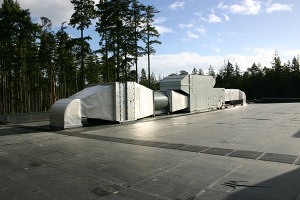 ventilation and why ventilation is so critical to a shooting range’s long-term success.
ventilation and why ventilation is so critical to a shooting range’s long-term success.
The first and primary purpose of ventilation is to remove contaminants created during the firing of a weapon from the respiratory zones of those occupying the range. Exploding primers containing lead styphnate and friction from the lead slug against the gun barrel create airborne lead. Carbon monoxide and other contaminants are also created during the firing of a weapon. The ventilation system removes all of these harmful particles.
The second and equally important reason for a properly designed and installed ventilation system is to keep the range at a negative pressure to the surrounding building space. Contaminants need to be contained in the range space. This will prevent the ingestion of these harmful particles, and also keep the non-range spaces and surfaces of the building free of contamination. This in turn will ensure the health and safety of all customers and employees.
The final purpose of the ventilation system is to remove the smoke from the range so visibility is high and the targets can be seen.
Ventilation Systems and How They Work
Many range owners are aware of the purposes of a ventilation system but may have questions when it comes to the system types and designs.
The suggested air flow for a small arms range is an average of 75 feet per minute at the firing line. This air flow must be even from floor to ceiling (known as laminar flow) and have minimal turbulence. There have been two general approaches to the distribution of air that have been used within the industry.
The first is a plenum wall. Although this approach can work and some have successfully tested to provide laminar flow, the plenum wall has also been prone to problems. The main issue is when the access door to the range and the window from the range safety office have been installed they tend to create turbulent areas. This can disrupt the laminar flow, which can prevent the contaminants from being properly contained. There have also been problems where the range officer standing in one position has caused a lane to fail the exposure test.
The second method that has proven successful is the radial diffuser. This method disperses air into the range in a 180 degree radial pattern. These diffusers are custom built and tested to provide proper air flow at the firing line. It is critical to only use proven products that have been tested to achieve the laminar or even air flow at the firing line. This will ensure the safety of range employees and customers and also keep the range compliant with health and safety regulations.
When deciding on the design of the ventilation system, negative air pressure is also important. Providing negative pressure in the range is accomplished by designing more exhaust than supply air. Creating laminar air flow at the firing line will protect a shooter’s respiratory zone, but it will not keep contaminants created in the range from entering other areas of the building. The industry standard for this design is 10% greater exhaust than supply. The tighter the range area of the building is constructed, the less differential is necessary to maintain the proper pressure differential. Some ranges have been designed with the 10% differential, but the exhaust is filtered and there was no method of modulation for the exhaust based on filter loading. This caused the range to go positive within a week of a filter change. It is very important to oversize the exhaust fan and use a variable frequency drive or an inlet vein vortex damper to regulate the fan. This will control the amount of exhaust that is filtered and keep the air at a negative pressure differential.
The most critical component to keeping the range negative is a control system that can start up, stop, and maintain a negative pressure in the range at all times. The control system must also monitor the range conditions as well as sound an alarm and shut down if unsafe conditions are present.
The Economics of Range Ventilation
Price may be another factor in considering a ventilation system as they can be expensive. A range owner might think about just using a local 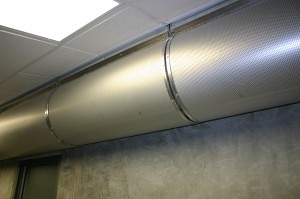 heating, ventilation, and air conditioning (HVAC) contractor to install the system. Unfortunately, most local HVAC contractors do not have the required experience with shooting ranges to make everything work properly, and standard HVAC equipment by itself is not sufficient for the task. There are specialized custom components that must be manufactured and installed to exacting standards. Experts in the industry handcraft these custom parts on a per-job basis to meet the specific needs of each individual range.
heating, ventilation, and air conditioning (HVAC) contractor to install the system. Unfortunately, most local HVAC contractors do not have the required experience with shooting ranges to make everything work properly, and standard HVAC equipment by itself is not sufficient for the task. There are specialized custom components that must be manufactured and installed to exacting standards. Experts in the industry handcraft these custom parts on a per-job basis to meet the specific needs of each individual range.
If the system is too difficult for the range staff to use, chances are the staff won’t use it, or it won’t be used properly. The top names in the industry have made usability a priority to ensure each ventilation system is easy for the end-user to understand and operate. For example, Action Target’s ventilation features a single control switch that activates the entire ventilation system and indicator lights that turn on when the system is ready for use. A convenient digital interface screen displays the status of the ventilation system at all times and displays any errors, alarms, or unsafe conditions that might arise. If something happens, Action Target can dial in to the ventilation system via a built-in modem to diagnose and make adjustments remotely.
Proper shooting range ventilation is essential. There are hazards and pitfalls that can be avoided only by companies with sufficient expertise and experience, so make sure to choose a team that can do the job right. The effects of poor ventilation in a shooting range are a serious matter, and potentially hazardous to the health of both range employees and customers. Lead poisoning in adults and children can cause digestive problems, high blood pressure, hearing problems, memory and concentration problems, and a host of other health issues. These hazards can be avoided if the range is ventilated properly. Without fail, an indoor range ventilation system must provide and maintain clean air for everyone in it. With a properly installed and functioning ventilation system, range owners can operate their range worry-free, assured the system is keeping the range, employees, and customers contaminant free and healthy.
Rely on the Experts for Help
There are hundreds of things to take into consideration when building a shooting range, but your top priority should always be safety. Before anything else, make sure your range is going to be safe for your customers, your employees, and the environment. If you are considering building a range, talk to the Action Target representative in your region and he will be happy to help you find the right equipment to fit your needs and budget. You can also use our Request a Quote form to get started on your range project today.
Please note, the tips included in this message have been found to be helpful for many clients throughout the years but may not apply in all situations. Please use judgment in determining which tips will be helpful in your particular situation.
What Great Shooting Ranges Look Like Inside and Out
We are proud of every range we build. Hard work, dedication to quality and safety, along with expert knowledge go into every project. Out of all the shooting range projects Action Target completed in 2013, the following four ranges stood out as great examples of what shooting ranges can be and should be by adapting with the changing industry. Click on the photos to learn more about each range.
POINT BLANK
Point Blank in Cincinnati is owner Tom Willingham’s second shooting range. There are only four locations in the world that use the new Mancom AWD wireless target retrievers and this range is one of them.
Centershot Gun Range
Centershot Gun Range has two shooting bays so they can accommodate law enforcement and the general public at the same time and with different training scenarios.
Barracks 616
Barracks 616 was designed with opaque shooting stalls to provide privacy for shooters and PEPP sound dampening material creating a more comfortable atmosphere for shooters by reducing the reverberation generated by gun shots.
Shoot Straight
Shoot Straight in Fort Lauderdale is the seventh Shoot Straight location in Florida. This shooting range features 24 lanes rated for rifle and pistol use to provide customers the opportunity to shoot a wide variety of calibers in one location.
2013 showed continued growth in the shooting sport in part because of the new indoor commercial ranges opening up throughout the nation. They are not the old, dark, and foreboding shooting ranges of the past; they are comfortable and inviting for new and experienced shooters alike. There are many other great ranges that Action Target was a part of and we wish we could show them all off here but that would make for an extremely long post. To everyone we have had the opportunity to work with, we thank you.
Help Shape the Changing Face of Shooting Sports
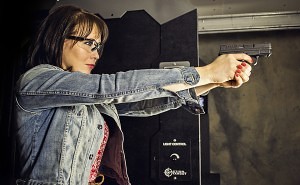 According to a recent study done by the National Shooting Sports Foundation (NSSF), “the landscape of target shooters has shifted.” With 20% of current shooters having taken up the sport in just the last five years, a new generation has emerged with a completely different demographic profile.
According to a recent study done by the National Shooting Sports Foundation (NSSF), “the landscape of target shooters has shifted.” With 20% of current shooters having taken up the sport in just the last five years, a new generation has emerged with a completely different demographic profile.
The study compares established shooters (more than five years of experience) with new shooters and shows that this new wave of shooting enthusiasts is often younger, female, and urban. Here’s a breakdown of the numbers:
Younger: 66 percent of new shooters fall into the 18-to-34-year-old category compared to 31 percent in the same age category for established shooters.
Female: 37 percent of new target shooters are female compared to 22 percent of established target shooters.
Urban: 47 percent of new target shooters live in urban/suburban settings versus 34 percent of established target shooters.
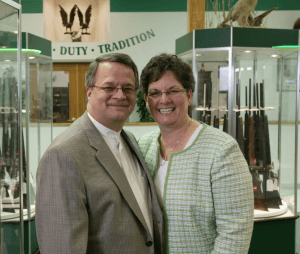
For owners of shooting ranges and gun shops, this means that it is no longer “business as usual.” As customer demographics change, so must the industry.
Innovative shooting ranges and gun shops across the country have taken notice of the trend and are adjusting the way they do business. One such innovator is Miles Hall, owner of H&H Shooting Sports in Oklahoma City.
“Shooting is not a men’s only club anymore,” Hall said. “47 percent of our customer base is women.”
In response to the shift, Hall has made a concerted effort to upgrade his shooting range facilities and provide firearms training that meets the demands of the new generation of shooters.
“There’s a huge audience out there who want to shoot, and you’re going to have to have the right equipment to take care of them,” Hall said. “The shooting sport has changed, and you have to either be changing with it or you’re going to die in the past.”
How You Can Help

As a company that not only manufactures shooting range equipment but also consults with range owners on every aspect of their businesses, we try to provide the most accurate information to help them succeed. In response to the industry’s shifting demographics, Action Target has created a survey to better understand the preferences of women when it comes to shooting range equipment, technology, and amenities.
Survey participants who qualify will receive a one-time use 20% discount to Action Target’s online store. The discount will be available through the end of the year.
Illinois Shooting Range Braces for New Concealed Carry Law with Huge Upgrade
As Illinois becomes the 50th state to allow the concealed carry of firearms, one shooting range a half hour out of Chicago is preparing for the influx of new shooters and turning heads in the process.
GAT Guns of East Dundee, Ill., recently added a monumental 39 new indoor lanes to its existing 24 making it one of the largest indoor shooting ranges in the country and the go-to destination for shooters near and far.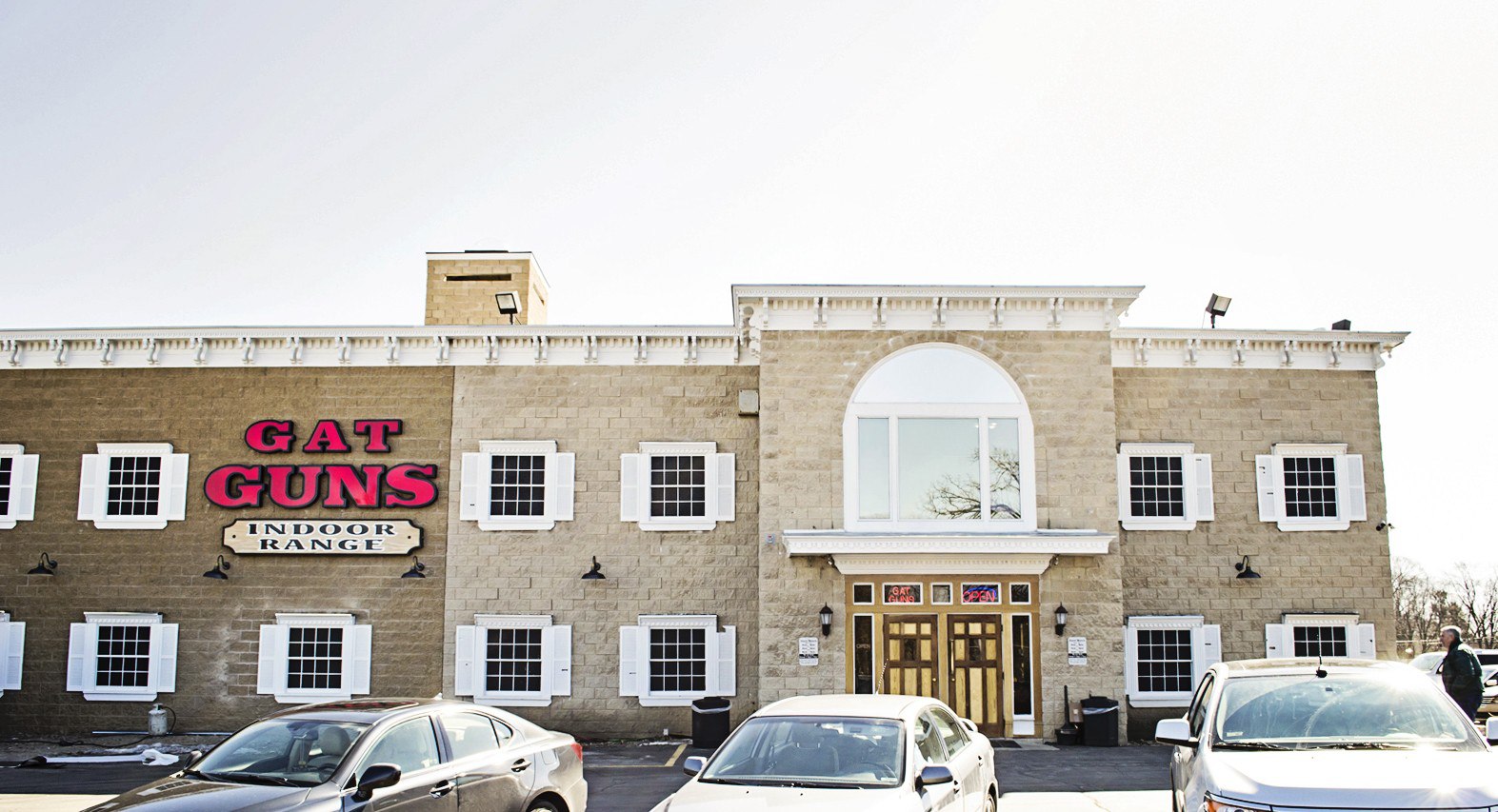
The new ranges, which were designed and installed by Action Target, include 50-yard and 75-yard bays with 14 lanes each as well as a 50-foot long tactical training range with 11 lanes. There is also a large classroom to accommodate the thousands of concealed carry permit applicants expected to come through the doors when the new law goes into effect on January 5.
“We foresaw a need for a full service training facility in the area,” GAT Guns General Manager Randy Potter said. “There’s nobody else around here that can take care of customers from A to Z as completely as we can. We have the training classes, the firearms inventory, the accessories, and now we have one of the most advanced firearms training facilities in the country.”
With the new Illinois concealed carry law requiring 16 hours of training (including live fire training on a shooting range), GAT Guns provides the ideal venue.
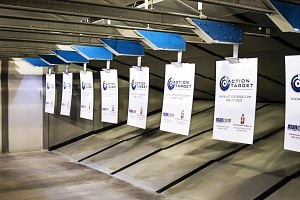
The new shooting bays include steel funnel bullet traps which safely collect and contain lead debris, bullet proof shooting stalls, an advanced air filtration system and Mancom target retrievers that allow for complete control over target distance, lighting effects and 360 degree random edging from an LCD control screen in every booth.
“Customers are blown away by the quality of the ranges,” Potter said. “The technology on our ranges allows shooters to control every aspect of their training. It’s an entirely new shooting experience.”
GAT Guns, which was founded in 1979, is already known as the Illinois headquarters of all things firearms with more than 6,000 guns in stock on any given day and 2,500 unique pieces on display.
“We consistently have folks from 150 miles south of here to the Wisconsin border and even as far west as the Mississippi River,” Potter said. “I attribute that to us being as unique as we are in size and scope as well as our commitment to professional customer service.”
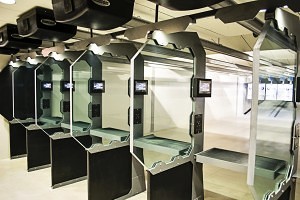
GAT Guns originally began in nearby Hanover Park and moved to the current location in 1989 where owner Greg A. Tropino (and thus the acronym “GAT”) bought an old restaurant and retrofitted it into the two-story gun supercenter it is today.
“Greg’s told me in the past that when he originally bought the building, he had no idea what he was going to put upstairs in the original footprint,” Potter said. “We’ve outgrown that by 10 times now.”
With 63 total lanes and shooting bays located on both floors, GAT Guns has quickly become one of the most talked about ranges in the country. It’s even attracted the attention of R. Lee “The Gunny” Ermey from Glock who spent a day there in May to promote the range and sign autographs.
“We had over 1,200 people wait to meet The Gunny that day he was here. It was a very fun event,” Potter said.
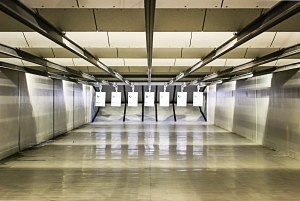
Even more than entertainment and retail, however, the mission of GAT Guns is to provide a central location for firearms education and quality training.
Training courses provided at the range currently include NRA First Steps, women only classes taught by women instructors, five phases of tactical pistol, five phases of tactical carbine, introductory handgun, practical holster and soon, Illinois concealed carry classes.
The new shooting bays recently opened up to the public and are also available for law enforcement qualification as well.
New Firearms Retailer Provides an Indoor Shooting Range for an Area Long Neglected
Red Dot Firearms of Layton, Utah, joins the short list of gun ranges in Davis County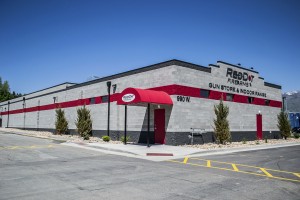
PROVO, Utah – May 22, 2013 – Davis County, Utah, recently welcomed a new kind of business to one of its largest shopping districts. Now you can get all of your grocery shopping done and hit the indoor shooting range all in the same place.
Red Dot Firearms, located just off I-15 exit 331 in Layton, recently opened its retail gun store and a 25 yard indoor shooting range capable of handling both handgun and rifle rounds including .5o BMG.
“We are the only retail firearms store in the area besides some of the big box stores, and we were the first place ever to apply for an indoor range license in the county,” owner Denny Wanlass said. “We felt like it was time people in the area had another option.”
According to Wanlass, many shooters in Utah have started moving their weekend shooting ventures away from public lands due to wildfires and other concerns, which means a higher demand for indoor ranges like Red Dot Firearms.
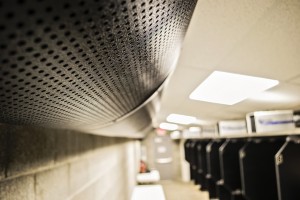
“A lot of people just drive out to the desert to shoot, but last summer, several wildfires were blamed on target shooting. Whether true or not, it’s still driving many shooters away from the wilderness areas and indoors,” Wanlass said. “That combined with the closures of public land and the increase in gas prices make our indoor range the perfect alternative.”
Shooters transitioning from the outdoors also get the added benefit of a climate controlled environment and a ventilation system installed by Carey’s Small Arms Range Systems that exceeds NIOSH, EPA and OSHA standards.
“We wanted a good ventilation system because we take our customers’ health very seriously,” Wanlass said. “Just about every person who has come out of there has said, ‘I love being in a range where I can breathe!’”
Fellow Utah business Action Target was contracted to install the range equipment at Red Dot Firearms including a 48-foot wide steel funnel bullet trap, armor steel ceiling and wall baffles to prevent rounds from escaping, and shooting stalls capable of stopping rifle rounds from point blank range.
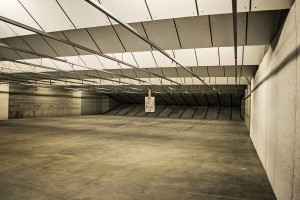
“Throughout the course of our research, it was clear that there really isn’t anyone else besides Action Target that is worth using,” Wanlass said. “The equipment on our range is second to none, and that means our customers can shoot with complete confidence that their safety is never going to be jeopardized.”
Red Dot Firearms is now open Monday through Friday from 10 a.m. to 8 p.m. and Saturday from 10 a.m. to 6 p.m. Classes in concealed carry, personal defense, hunter’s safety and more will be held regularly.
Bullet Trap Comparisons, Pt. 2
Building a shooting range can be a daunting task. There are so many different things to consider and decisions to make that it can become a little overwhelming. One issue that seems to confuse potential range owners the most is bullet containment. Without a doubt, bullet containment is the most important aspect of every indoor and outdoor range. Proper containment of fired rounds means safety for your employees and customers, but with so many different types of bullet traps available on the market that promise to do this or that, choosing the right system can be hard. The purpose of this article is to provide accurate information and valuable education by examining various bullet trap theories, technologies, and applications in an objective manner.
The following information represents the views and opinions of Action Target based on our experience and observations. You are encouraged to conduct your own research and speak with other users about their experiences with the various bullet trap technologies presented.
Rubber Lamella Trap
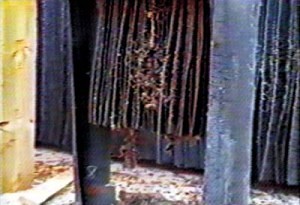 With this trap, tightly grouped rubber curtains or lamellas are hung from a support structure to create a bullet stopping barrier. As bullets pass through the layers of rubber strips, their energy is dissipated until they come to a stop. A steel plate is mounted at the back of the trap to block rounds that make it through the lamellas.
With this trap, tightly grouped rubber curtains or lamellas are hung from a support structure to create a bullet stopping barrier. As bullets pass through the layers of rubber strips, their energy is dissipated until they come to a stop. A steel plate is mounted at the back of the trap to block rounds that make it through the lamellas.
Because rubber is destroyed every time you shoot into it, the rubber strips are quickly shredded under any kind of moderate to heavy use. One of the most quoted features of rubber traps is that bullets don’t fragment on impact like they do on steel. This is true until bullets start impacting other bullets already embedded in the rubber.
Regardless of the application, the use of a rubber bullet trap introduces a very real fire hazard that must be considered and dealt with appropriately
The benefits of a lamella trap include its small floor space requirement, and the ability to capture some bullets whole.
Weaknesses include high maintenance costs, fire hazard, messy appearance, and the restriction of low volume shooting only.
Vertical Rubber Granule Trap
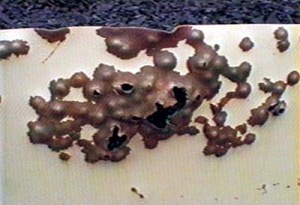 Another European design uses a large steel chamber filled with chopped rubber and a penetrable rubber sheet across the front the keep the rubber granules in place.
Another European design uses a large steel chamber filled with chopped rubber and a penetrable rubber sheet across the front the keep the rubber granules in place.
The trap works the same way a sand berm works, except the sand is replaced by granules of chopped rubber and the face of the trap is vertical. Like the rubber lamella trap, the front skin of the rubber granule trap is permanently damaged each time a bullet is fired into it.
As larger and larger holes are created in the front skin, rubber granules can spill out and large bulges can develop as the structural integrity of the trap is compromised. Regular patching and repair is often required to keep the granules in the chamber.
As the granules settle, areas of dangerously low density can form at the top of the trap causing rounds to pass through the rubber and escape out the back. To clean the trap, bullets must be mined and separated from the rubber then disposed of properly.
The benefits of a vertical rubber granule trap include its small floor space requirement, the ability to capture some bullets whole, and reduced lead dust levels.
Weaknesses include massive ongoing maintenance, service costs, fire hazard, and the restriction of low volume shooting only.
Rubber Block Trap
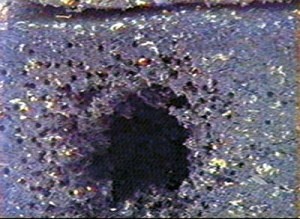 The rubber block trap is similar in concept to the rubber granule trap, except the rubber granules are molded together to form a solid object. The rubber blocks are stacked on top of each other to create a wall that serves as the bullet trap. When a bullet is fired into the blocks, it is stopped and stored within the block itself. Like all rubber traps, the blocks are damaged with every shot and large holes can quickly develop, severely limiting the trap’s ability to stop bullets. As the holes get larger, the blocks get weaker and the whole wall tends to collapse under its own weight.
The rubber block trap is similar in concept to the rubber granule trap, except the rubber granules are molded together to form a solid object. The rubber blocks are stacked on top of each other to create a wall that serves as the bullet trap. When a bullet is fired into the blocks, it is stopped and stored within the block itself. Like all rubber traps, the blocks are damaged with every shot and large holes can quickly develop, severely limiting the trap’s ability to stop bullets. As the holes get larger, the blocks get weaker and the whole wall tends to collapse under its own weight.
The benefits of a rubber block trap include its small floor space requirement and the ability to capture some bullets whole.
Weaknesses include UV breakdown, significant ongoing maintenance, fire hazard, and structural collapse.
Wet Funnel Trap
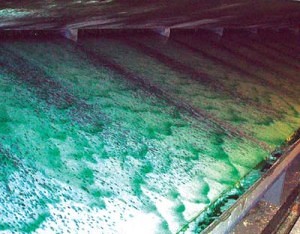 The wet funnel trap incorporates gently sloping steel plates that reduce bullet fragmentation on impact. As bullets hit the plates, they are directed to the narrow end of the funnel and enter a deceleration chamber where their energy is dissipated.
The wet funnel trap incorporates gently sloping steel plates that reduce bullet fragmentation on impact. As bullets hit the plates, they are directed to the narrow end of the funnel and enter a deceleration chamber where their energy is dissipated.
While the upper impact plates remain dry, the lower plates are constantly flooded with a water and oil mixture that is intended to lubricate the steel. The water is continually recycled as it flows down the plates and into a holding tank where it is electrically pumped out and again sprayed on to the plates.
On indoor ranges, some wet trap owners report that the increased humidity can leave an oily film on the rest of the range and may cause HEPA filters in the ventilation system to clog. They have also discovered that frangible ammunition can cause problems because the powder created by disintegrating bullets mixes with the water and hardens into a cement-like substance that requires an extremely difficult cleaning process.
It has been recommended to treat the water with chlorine to prevent algae in warm climates, and antifreeze to prevent freezing in colder climates. These substances combine with the water, oil, and lead, and can create a significant hazardous waste problem.
The benefits of a wet funnel trap include the durability of steel, reduced bullet fragmentation, reduced lead dust levels, and the ability to handle larger calibers.
Weaknesses include its higher cost, large floor space requirement, water treatment chemicals, increased humidity, problems with frangible ammunition, maintenance of the electric pumps and filters, and its nonmodular construction.
Vertical Funnel Trap
 Instead of a continuous horizontal funnel, this trap uses a series vertically oriented funnel boxes to gather the bullets. As with a horizontal funnel, bullets are deflected by the impact plates into a deceleration chamber at the back of the trap where they are collected and stored.
Instead of a continuous horizontal funnel, this trap uses a series vertically oriented funnel boxes to gather the bullets. As with a horizontal funnel, bullets are deflected by the impact plates into a deceleration chamber at the back of the trap where they are collected and stored.
The angles of the impact plates are not as severe as a venetian blind or escalator type trap, but they are more severe than other modern steel traps so bullet fragmentation on impact can still be an issue.
As individual chambers are mounted next to each other, vertical edges that run from the top to the bottom of the trap are created. These edges can pose a significant ricochet hazard. Additionally, the individual chamber design prohibits any cross-lane shooting and greatly limits the flexibility and functionality of the trap as a whole.
The benefits of a vertical funnel trap include the durability of steel, easier lead collection, and a smaller floor space requirement.
Weaknesses include bullet fragmentation, no close-range shooting, and no cross-lane shooting.
Rely on the Experts for Help
There are hundreds of things to take into consideration when building a shooting range, but your top priority should always be safety. Before anything else, make sure your range is going to be safe for your customers, your employees, and the environment. If you are considering building a range, talk to the Action Target representative in your region and he will be happy to help you find the right equipment to fit your needs and budget.
VIDEOS: The Biggest Bullet Trap in the World / Michael Bane Endorses Action Target’s Rimfire Steel
Industry film company Panteao Productions recently stopped by Lotus Gunworks in Jensen Beach, Florida, to film in the first indoor double-decker shooting range Action Target has ever built. Take a tour of one of the most extensive firearms selections in South Florida and the only indoor range to feature a two-story steel funnel bullet trap. Watch it here:
Panteao Productions, known for its in-depth firearms training videos, will be coming out with a new Make Ready DVD in the near future on .22 rimfire training featuring the expertise of TV host Michael Bane and 30-year IDPA and USPSA veteran competitor Tom Yost. To film the training video, Panteao Productions exclusively used Action Target’s new Rimfire Steel![]() target line and even filmed a brief endorsement from Michael Bane. Watch it here:
target line and even filmed a brief endorsement from Michael Bane. Watch it here:
Bullet Trap Comparisons, Pt. 1
For many years, bullet trap technology has been mired in confusion, misunderstanding, and misinformation. The various approaches to bullet containment and disposal have become as diverse as they are numerous. The purpose of this article is to provide accurate information and valuable education by examining various bullet trap theories, technologies, and applications in an objective manner.
The following information represents the views and opinions of Action Target based on our experience and observations. You are encouraged to conduct your own research and speak with other users about their experiences with the various bullet trap technologies presented.
Sand Berm
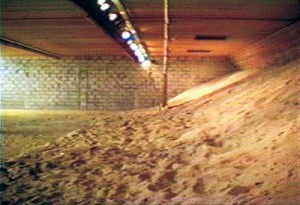 The sand or dirt berm is the oldest and most basic type of bullet trap. It uses the mass of the berm itself to stop and store bullets, and on outdoor ranges it can literally be the side of a mountain. On indoor ranges however, some type of structure or barricade is used to support the berm and hold back the sand.
The sand or dirt berm is the oldest and most basic type of bullet trap. It uses the mass of the berm itself to stop and store bullets, and on outdoor ranges it can literally be the side of a mountain. On indoor ranges however, some type of structure or barricade is used to support the berm and hold back the sand.
On ranges where qualification or other events where tightly grouped shooting patterns are common, concentrations of lead called hot spots can form behind the targets causing subsequent shots to ricochet and bounce back toward the shooter. In order to recover spent bullets, the berm must be mined and the lead separated out. A certain amount of the sand will be contaminated and must be replenished each time the trap is cleaned. Sand and dirt berms are coming under increasingly harsh environmental scrutiny due to high lead levels in the ground around the trap and the tendency of the lead to seep into surrounding ground water.
The benefits of a sand berm include low cost, relatively low maintenance, and the ability to use any kind of ammunition.
Weaknesses include potential environmental hazards, expensive mining, and hot spot ricochet.
Pit and Plate Trap
With this application, a steel plate is used to redirect bullets into a bed of sand. The steel is often called a “smash” plate because the acute angle—in this case, anything greater than 25 degrees—causes bullets to smash into small pieces on impact before they are scattered on the sand below.
Because the lead fragments rest mostly on top of the sand, this trap must be cleaned frequently by mining the lead from the sand and disposing of it properly. Under moderate to heavy use, a thick lead build-up can develop in the back corner of the trap causing bullets to be deflected back toward the shooter.
The benefits of a pit and plate trap include lower initial cost and simple installation.
Weaknesses include bullet fragmentation on impact, lead build-up, ricochet, and high maintenance.
Water and Plate Trap
The water and plate trap is similar to the pit and plate trap, except the sand is replaced by a large trough of water. Bullets still fragment into small pieces after impacting the smash plate, but with this system, they splash into the water and sink to the bottom of the trough. To retrieve the lead, you must shovel or scoop it from the water and dispose of it properly. The water in the trough must be replenished due to evaporation, and the evaporation can cause increased humidity on your range and problems with your ventilation system.
The benefits of a water and plate trap include lower lead dust levels and no ricochet off other bullets.
Weaknesses include bullet fragmentation on impact, maintenance of the water, and the limitation to indoor use only.
Venetian Blind Trap
This older application uses a series of angled steel smash plates to redirect bullets to the back and bottom of the trap. Some versions of this trap have the smash plates mounted loosely to help absorb some of the bullets’ energy, but the acute angle of the plates can still cause significant fragmentation. To keep bullet splatter from bouncing back at the shooter, rubber curtains are often mounted across the entire face of the trap.
Because rubber is destroyed every time you shoot into it, these curtains must be replaced or patched frequently to maintain their effectiveness.
The benefits of a venetian blind trap include the durability of steel, no sand or granules, and a small floor space requirement.
Weaknesses include bullet fragmentation on impact, splatter and ricochet, no close-range shooting, and maintenance of the rubber curtains.
Escalator Trap
This is another old-fashioned steel trap that uses steeply angled smash plates to stop bullets and direct the fragments to an open collection area. Some manufacturers recommend that the impact plates be coated with oil to provide lubrication and reduce fragmentation. This oil can be washed away into the surrounding soil if the trap is not protected from the elements in outdoor applications.
The same system of protective rubber curtains may also be necessary with this trap due to the acute angle of its steel smash plates.
The benefits of an escalator trap include the durability of steel and no sand or rubber granules.
Weaknesses include bullet fragmentation on impact, no close-range shooting, maintenance of the rubber curtains, and poor lead storage and collection.
Rely on the Experts for Help
There are hundreds of things to take into consideration when building a shooting range, but your top priority should always be safety. Before anything else, make sure your range is going to be safe for your customers, your employees, and the environment. If you are considering building a range, talk to the Action Target representative in your region and he will be happy to help you find the right equipment to fit your needs and budget.
Myths About Wet Steel Traps
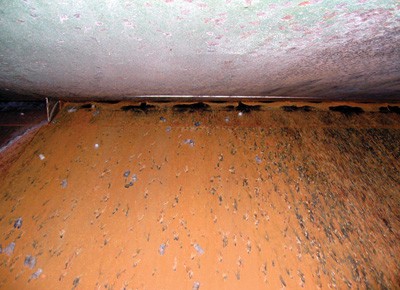 As with anything else in life, the ability to make an informed decision is based on the quality of the information you receive. The purpose of this article is to explore some of the claims associated with using water on steel funnel traps.
As with anything else in life, the ability to make an informed decision is based on the quality of the information you receive. The purpose of this article is to explore some of the claims associated with using water on steel funnel traps.
This information represents the opinions of Action Target based on the experience and observations of our range consultants and engineers. We encourage you to conduct your own research and speak with other users about their experiences with the various bullet trap technologies presented before drawing your own conclusions.
CLAIM #1: You can use any type of ammunition on a wet steel trap.
It has been reported that frangible ammunition may cause problems with wet funnel traps because the powder created by certain types of disintegrating bullets can mix with the water and harden into a cement-like substance resulting in an extremely difficult cleaning process.
CLAIM #2: Wet steel traps eliminate lead dust on your range.
If a bullet strikes an area on a wet steel trap where the water and oil mixture is flowing (like on the bottom plates), the amount of lead dust generated at the trap on initial impact may be reduced. But if the bullet hits on the upper plates where no water is present, lead dust can be generated much the same as on a trap where no water system is in use. Also, lead dust containment systems such as water are meant to deal with lead on the bullet trap itself. They typically have little or nothing to do with emissions at the firing line or other areas of the range.
CLAIM #3: Wet steel traps capture all pullets whole and eliminate splatter and ricochet.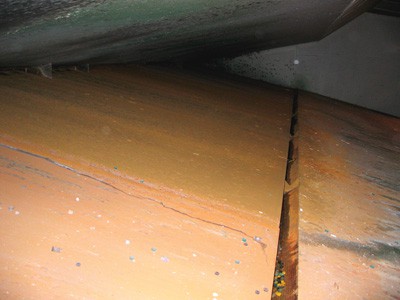
The gently sloping angles of steel funnel plates do help prevent bullet breakup on initial impact, but bullets can also fragment into small pieces once they enter the rear chamber and strike more steel surfaces inside. Also, many designs include a vertical edge at every seam where two chambers meet and are attached to each other. Deflectors are typically used to protect these vertical edges, and bullets can fragment more significantly if they strike these deflectors. Our observations would indicate that the degree of bullet fragmentation is mostly related to the velocity of the bullet. Slower pistol rounds may be able to be captured more whole when using a primary decelerant or lubricant such as water, but faster rifle rounds tend to disintegrate whether the water is present or not.
CLAIM #4: Wet steel traps are more environmentally friendly.
A doctor’s first and fundamental responsibility is to do no harm and to not make a difficult situation worse than it already may be. The same can be said for a bullet trap. Because lead disposal is already difficult enough for most shooting ranges, the last thing we thing a bullet trap should do is to complicate the matter by mixing the lead with other substances such as water, oil, chlorine, or antifreeze.
CLAIM #5: Wet steel traps function equally well indoors and outdoors.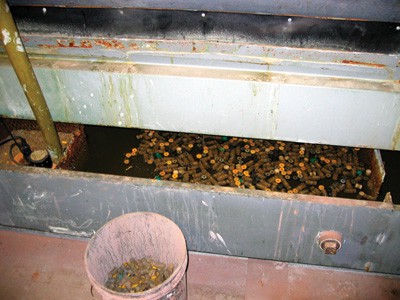
Referring back to claim #4, it can be much more difficult to contain all potential contaminants generated by a wet steel trap on an outdoor range. Rain, snow, ice, wildlife, leaves, twigs, and other clogging debris can complicate matters when operating outdoors.
CLAIM #6: One piece welded funnel plates are better than modular funnel plates.
If everything is welded together on site, you can end up with a bullet trap that is much more difficult to service or repair should anything go wrong. Long, continuous sheets of plate steel can be more prone to stress fractures and cracking than shorter, modular plates. That is one reason why bridges and overpasses are often formed by bolting together multiple modular pieces. When modular funnel plates and joint systems are properly designed, you get a strong and maintenance-friendly bullet trap that requires no sacrifice of safety or performance.
CLAIM #7: Funnel plates mounted at a 12 or 13 degree angle function significantly better than funnel plates mounted at a 15 degree angle.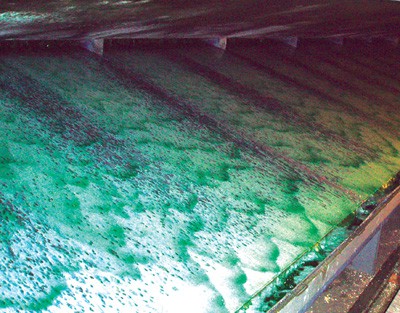
If a 12 or 13 degree slope is better than a 15 degree slope, then isn’t 11 better than 12? Why not drop to 9 degrees? Or 7? Since every degree you go down can increase the cost and the front-to-back size of the trap, there is a point at which you can reach the point of diminishing returns. All other factors being equal (steel hardness, bullet trajectory, etc.), our high speed video tests do not reveal any significant difference between impacts at 12 or 15 degrees. Although it is possible to install an Action Target trap with plates mounted at either 12 or 13 degrees, we believe 15 degrees to be optimal for most uses.
CLAIM #8: A 30-inch diameter in the circular deceleration chamber is better than a 26-inch diameter.
Following the same logic, why not use a 40-inch diameter? Why not 50? Again, it is important to weigh multiple factors such as performance, cost, and space. Action Target believes that the most important thing about a chamber is that it effectively contain rounds, that it have a good service life, and that it can be easily serviced if and when the need arises. We believe our chamber design achieves these values in an optimal way.
CLAIM #9: Wet steel traps don’t require much maintenance.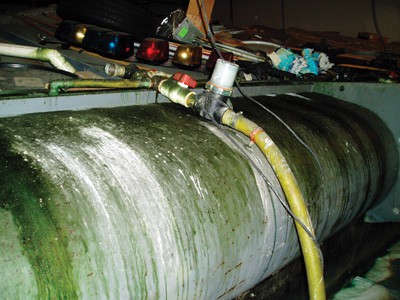
Regular maintenance should be expected with any bullet trap, regardless of the materials used. Just like anything else, range equipment must be properly cared for to keep it working.
The wet steel trap designs we have seen include a water pump, spray nozzle, and filter systems that should be regularly maintained. Potential debris like cardboard, paper, wood, and shotgun wads can certainly be a problem if they are introduced into these systems. Lead should be removed from the collection system and disposed of properly. And we recommend you account for any exposure the lead may have had to water, oil, chlorine, or antifreeze. Water sources should be maintained and you should deal with any potential sources of flooding or leaking. In some cases, an external settling pond or a drainage tank with a waste trap may be needed to keep contaminated water from entering the sewer system. Finally, you should consider any additional effect the potentially higher humidity may have on your ventilation system and any HEPA filters.
NOTE: None of the photos used in this article are of Action Target bullet traps.








